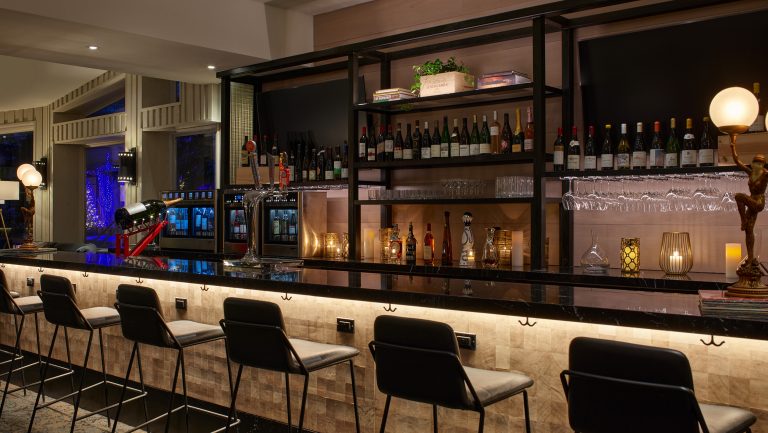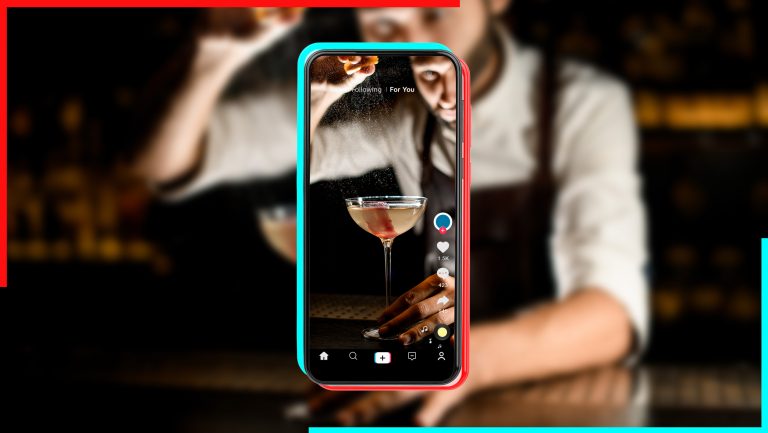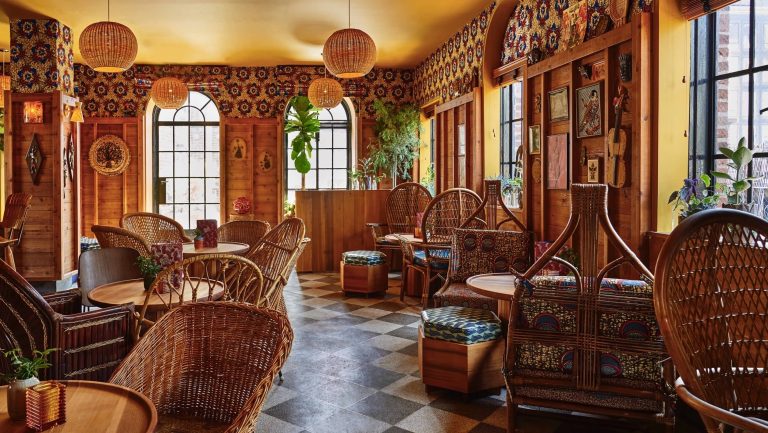The après-ski scene at Chair 9, a 1,450 square-foot bar located in luxury Aspen retreat The Little Nell, is legendary. As soon as lifts close, the DJ-fueled lounge quickly fills to standing-room-only capacity, with guests eager to party with Champagne, large-format wine bottles, and group shots of tequila.
After the pandemic brought the bacchanalia to a screeching halt last March, The Little Nell set out to reinvent Chair 9 into a new concept for ski season 2021. Its new iteration, The Wine Bar, is a reservation-only lounge limited to a fraction of its former capacity, retrofitted with new lighting and Art Deco décor, yet it features the same high-energy, all-vinyl music lineup and DJ. The legacy wine program was augmented with three Wineemotion dispensers, allowing for easy pours of Grand Cru Burgundy and first growth Bordeaux alongside selections from Napa, Ribera del Duero, Tuscany, and even Lebanon.
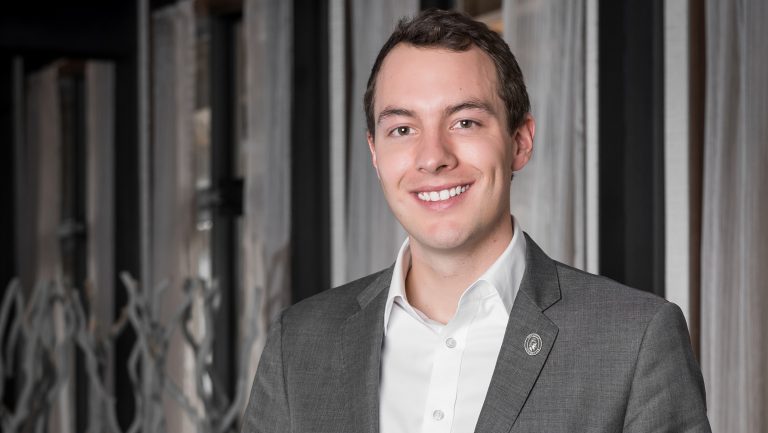
“Without that packed, shoulder-to-shoulder atmosphere, we knew Chair 9 wouldn’t be the same,” says The Little Nell’s wine director, Chris Dunaway. “So we sought to create something that was highly attractive to guests and emphasized our wine culture.”

Don’t miss the latest drinks industry news and insights. Sign up for our award-winning newsletters and get insider intel, resources, and trends delivered to your inbox every week.
Yet, without the “rowdy crowd necessary to recreate the après machine,” he explains, The Wine Bar has become more than a temporary pandemic solution, but a highly sought-after, highly profitable, wine-centric concept that is more on-brand. “Even at our max of 42 guests with distancing between tables, the space looks bustling,” reports Dunaway. The Little Nell intends to stick with the new format indefinitely.
Creatively Leveraging Local Tourism
The hotel bar is a distinctive breed. Although they can attract local residents with compelling beverage programs and imaginative interiors, hotel bars are heavily reliant on a steady stream of transient hotel guests, an audience that has been in short supply over the last year. Many hotels have kept bars closed during this time, yet some have taken transformative measures to create new revenue—and have seen surprisingly strong demand.
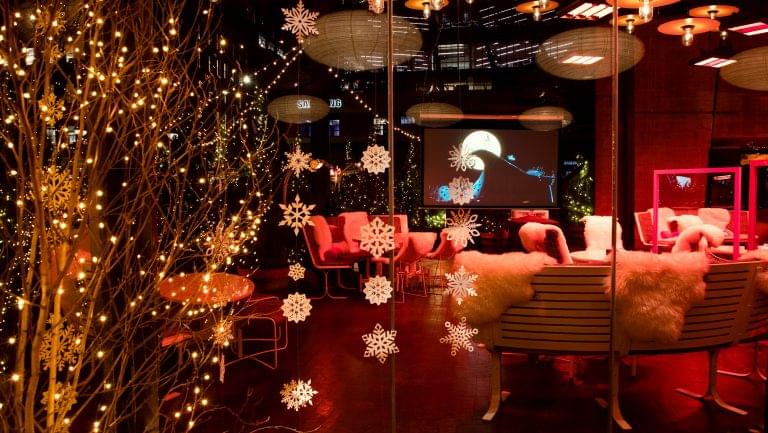
In New York City—where tourism almost completely dried up—The Standard, High Line turned their outdoor plaza into The Forest, a woodland-inspired pop-up “with an inviting, cozy, and safe atmosphere for the local community as there are so few entertainment options in the city to enjoy,” explains Julien Pierlas, the Standard’s food and beverage director. “We wanted to create an environment where families and friends could come to escape the pandemic blues.”
At indoor-outdoor The Forest, located just outside of the Standard Grill and open through the end of March, guests sip cocktails like the Winter Oaxaca (mezcal, Ancho Chile liqueur, vanilla, coconut) and the Ginger Baby (vodka, ginger cordial, ginger beer). The “Flix in the Forest” screenings of nostalgic films take place five nights a week and have proven so popular that there are long waitlists every night.
“Because of this demand, we’ve been able to rehire many of our staff members and look forward to continuing to do so as restrictions decrease,” says Pierlas, who vows that the Forest will thrive in some iteration post-pandemic.

The local interest in private dining experiences was in such high demand at the Hyatt Centric Las Olas Fort Lauderdale that the hotel overhauled a guestroom to bring 901 to life, a glamorous Prohibition-style hangout complete with velvet furnishings and antiques. Reserved for parties of up to six, guests can linger for two hours.
General manager Eyal Goldberger also launched a bartender-in-residence program at 901 “to give back to our friends in the industry,” he explains. “We highlight bars that might be struggling or have had to close as a result of the pandemic. We are also building awareness for up-and-coming bartenders both locally and nationally.”
First up, the now-shuttered the Gibson in Washington, D.C. gets the spotlight, followed by Midnight Cowboy in Austin. The response has surpassed expectations, says Goldberger: “We’re almost fully booked through March and expect reservations to keep on coming as we have more pop-up activations planned on our calendar. It’s a great revenue driver for our property.”
At The Little Nell, Dunaway reports tremendous interest in private wine experiences, and has developed many concepts to meet demand: The hotel’s lower-level boardroom has been reborn as a speakeasy concealed behind a bookshelf for personalized tastings, and guests can enjoy mountaintop tastings while watching the sun set over the Elk Mountain Range. “Since wine is such a cherished piece of our culture at The Nell, it was a seamless transition for us to create all these new experiences in different forms—many of which we will always continue to offer,” he explains.
Dunaway credits the “surge of tourism” he has seen over the last year to an increase in regional travel. While the hotel is not seeing their international guests, the American visitors from neighboring counties and states have more than made up for the loss: The Little Nell experienced a record summer, with wine sales up by almost 30 percent.
Cocktails To-Go Become Lifelines
Longman & Eagle, a popular hangout in Chicago’s Logan Square neighborhood, engages local customers through its monthly Flight Club—a rotating flight of rare, vintage, and hard-to-find whiskies like Kentucky Owl 11-year rye Batch No. 2 and Van Winkle Special Reserve Lot B—that customers can pick up at Longman & Eagle and taste at home.
“We have an extensive whiskey collection that we’ve acquired over the past decade, and we’ve always valued both whiskey tasting and education, so it just made sense to create some fun flights for folks to enjoy until they can come sit at the bar and browse our full selection again,” says owner Peter Toalson. “The Flight Club feels like a real, tangible way to connect with our audience beyond social media.”
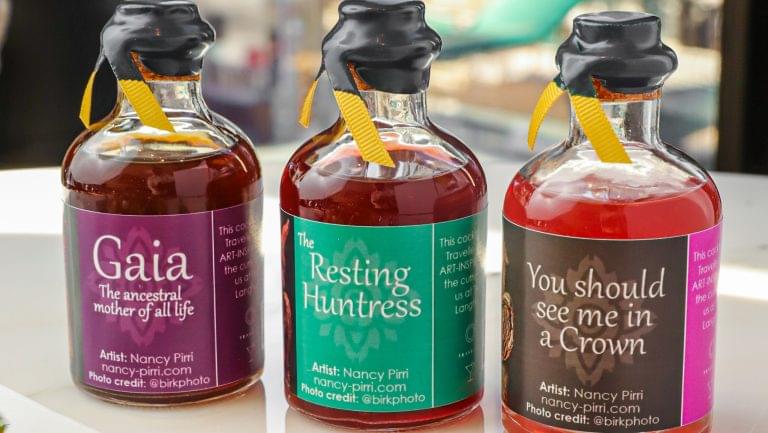
At the Langham, Chicago hotel, Slava Borisov, the lead mixologist at the hotel’s Travelle restaurant, drew on local artist Nancy Pirri’s most recent collection of ceramic sculptures to create three bottled cocktails that direct a portion of proceeds to the Coalition for Rainforest Nations and cancer organization Bright Pink. The trio of artful cocktails—You Should See Me in a Crown (Don Julio reposado tequila, aged rum, peach liqueur, Bianco, violet-lavender syrup), Resting Huntress (Bulleit bourbon, Campari, sweet vermouth, aged in a Spanish cigar box), and Gaia (infused Ketel One vodka, China-China amaro, and Cocchi Americano)—sell equally well to both locals and hotel guests.
Other hotels are embracing takeaway cocktails to both generate income and maintain brand momentum. When THesis Hotel Miami opened in Coral Gables over the summer, they aimed to give guests a fuller experience by offering three varieties of bottled cocktails, including the Que Banana (banana-infused gin, tiki spice, pimento dram, lime juice), to make up for the lack of nightlife options.
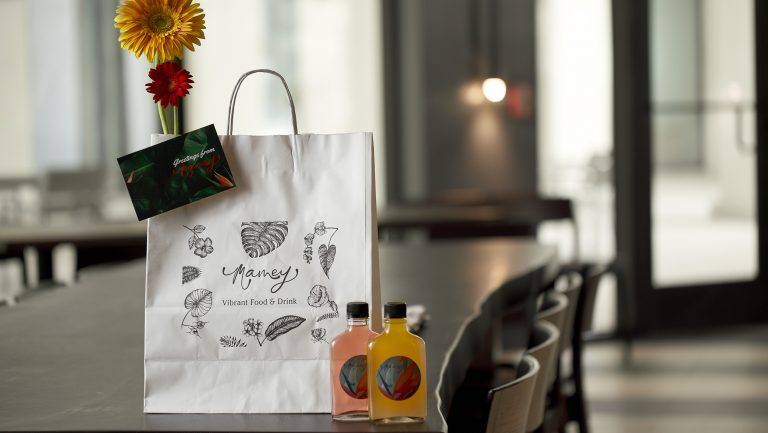
Famed London bartender Ryan Chetiyawardana has a stateside presence with Silver Lyan at the Riggs Hotel Washington D.C.. Here, the Silver Lyan at Home program creates four- and 16-ounce versions of cocktails like the Beeswax Old Fashioned and offers home delivery to residents, which has been highly effective in engaging the local community.
Hotel brand The Hoxton, known for its animated lobby cocktail bars, is keeping the upbeat vibe going with pre-batched, bottled cocktails that can be bought at the front desk during check-in or through room service at the Los Angeles and Brooklyn locations. At the Hoxton, Downtown L.A., for example, an Olive Oil Martini, spicy margarita, Old Fashioned, or house Negroni—large enough to serve two—are on offer, courtesy of Sunday Hospitality. In Brooklyn’s colder climate, Hoxton’s menu includes drinks like the After Dark (Teeling Irish whiskey, Mr. Black coffee liqueur, Suze, banana, sweet vermouth).
Todd Enany, the co-founder of Sunday Hospitality, says that demand for premium cocktails hasn’t diminished; the manner in which they are distributed is just temporarily altered. “Pre-batched cocktails are allowing us to satisfy the demand while remaining operationally savvy,” he says, a notion that is reinforced by repeat orders from guests, making these bottled beverages “a no-brainer” to keep developing for in-room dining and takeaway even when it’s safe to return to their bars.
“I think guests realize the amount of transition that has taken place in this industry over the last year,” says Enany, “and are excited to see the problem-solving and innovation.”

Dispatch
Sign up for our award-winning newsletter
Don’t miss the latest drinks industry news and insights—delivered to your inbox every week.
Alia Akkam is a writer who covers food, drink, travel, and design. She is the author of Behind the Bar: 50 Cocktails from the World’s Most Iconic Hotels (Hardie Grant) and her work has appeared in Architecturaldigest.com, Dwell.com, Penta, Vogue.com, BBC, Playboy, and Taste, among others, and she is a former editor at Edible Queens, Hospitality Design, and Beverage Media. A native New Yorker, Alia now calls Budapest home. Follow Alia @behdria.

